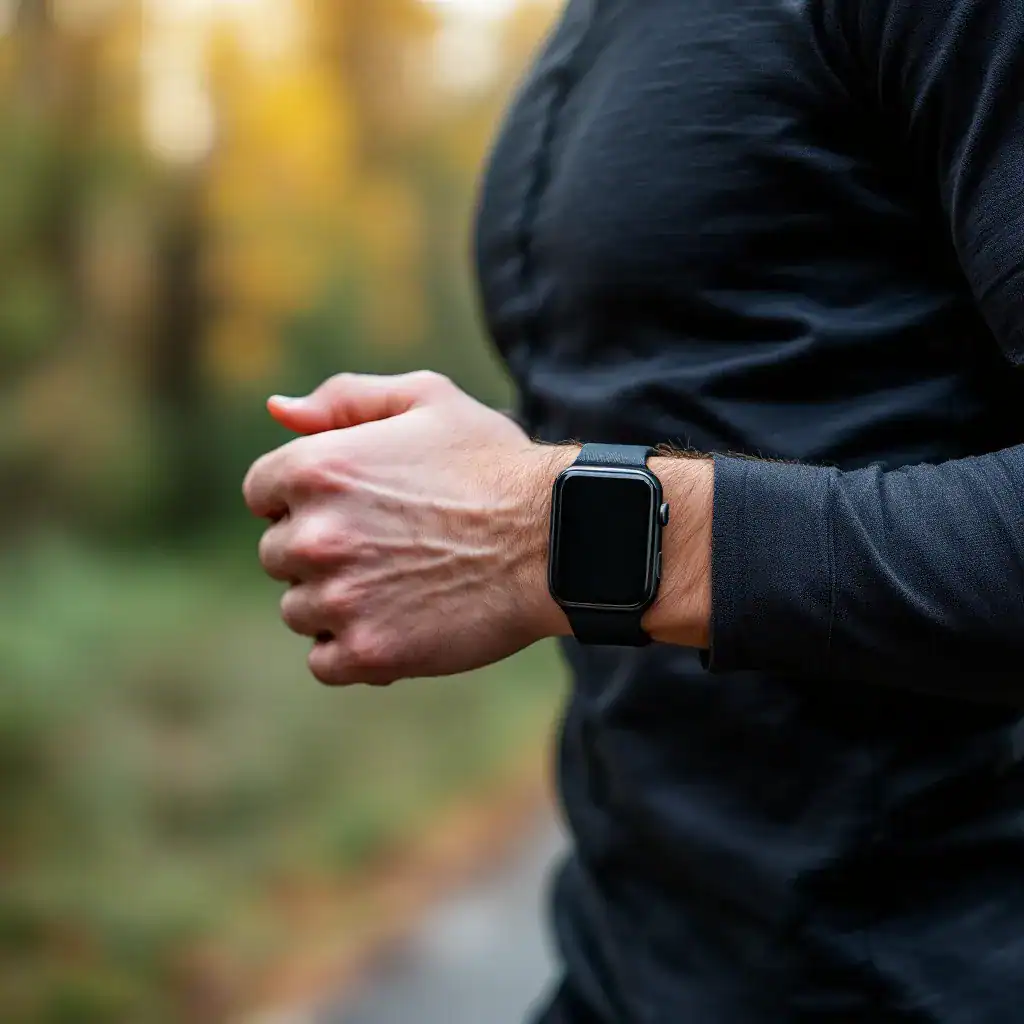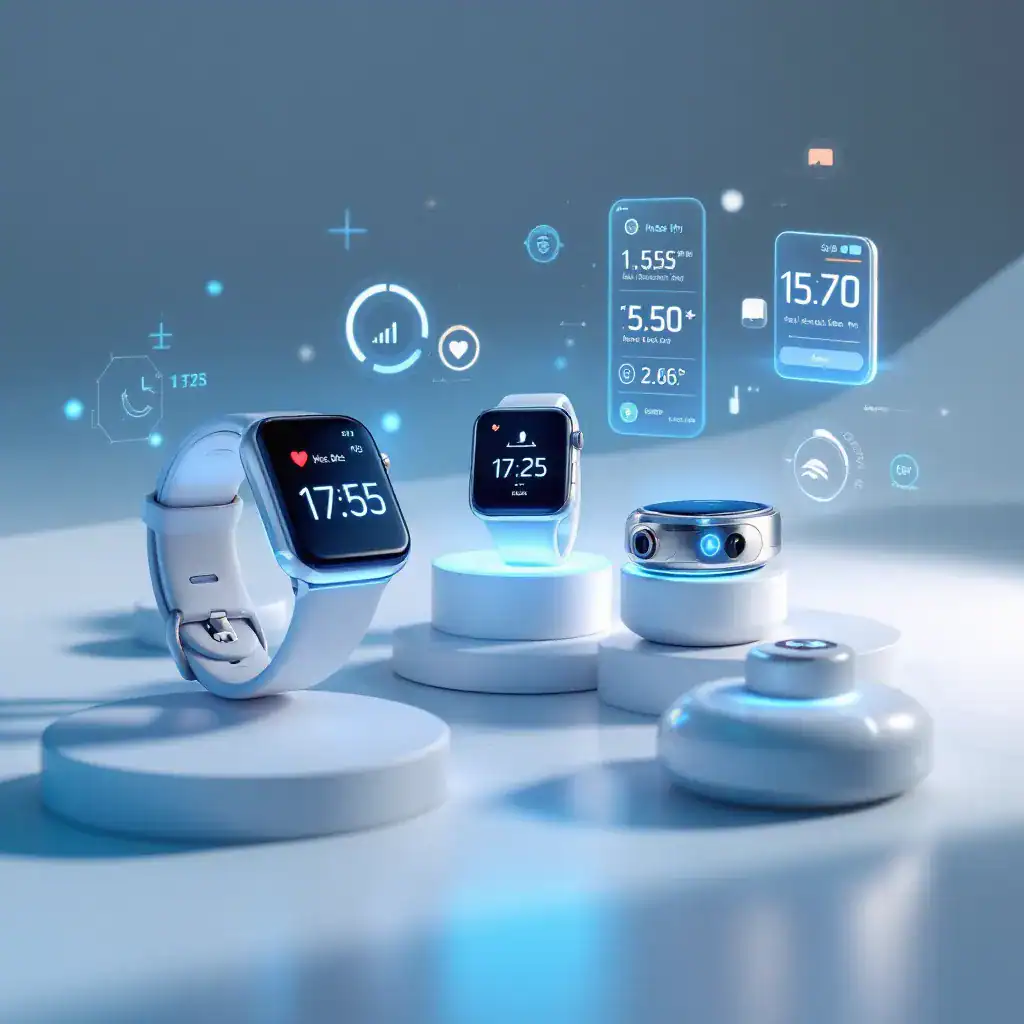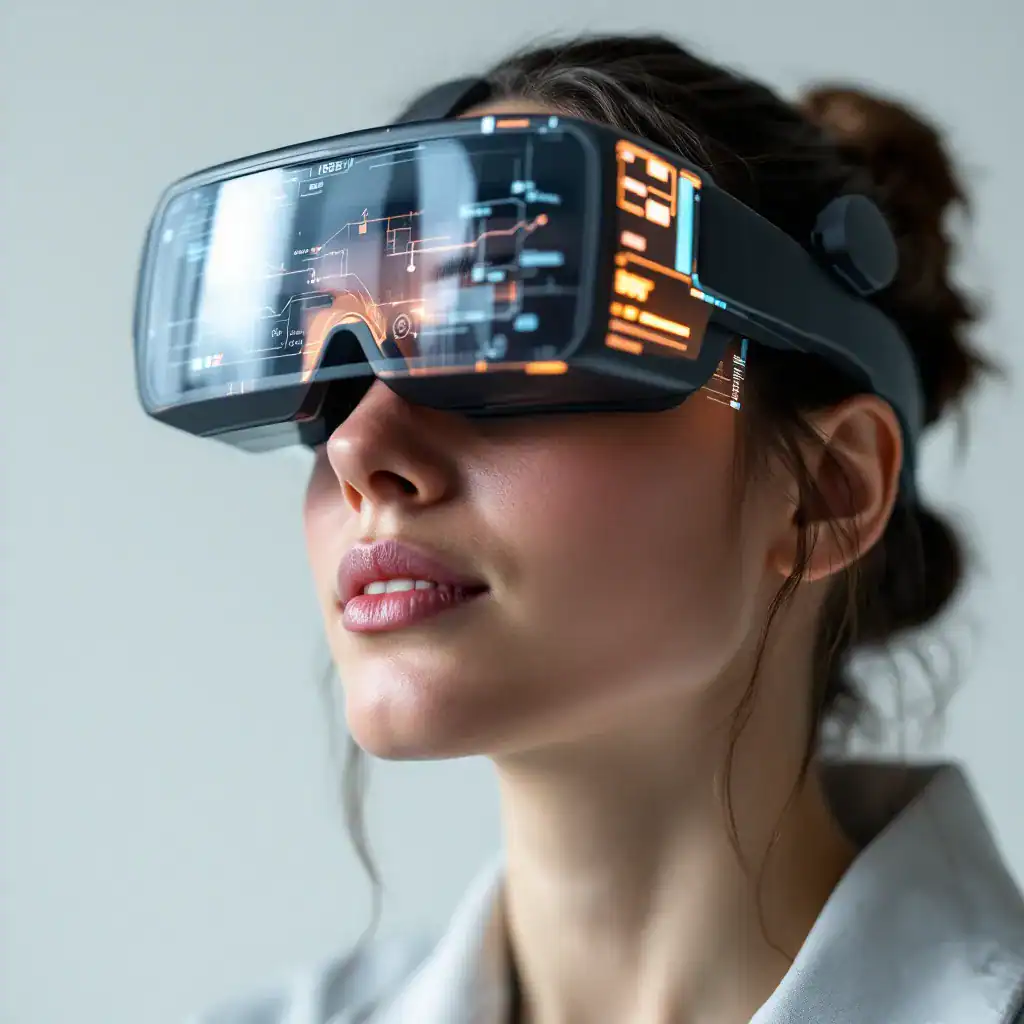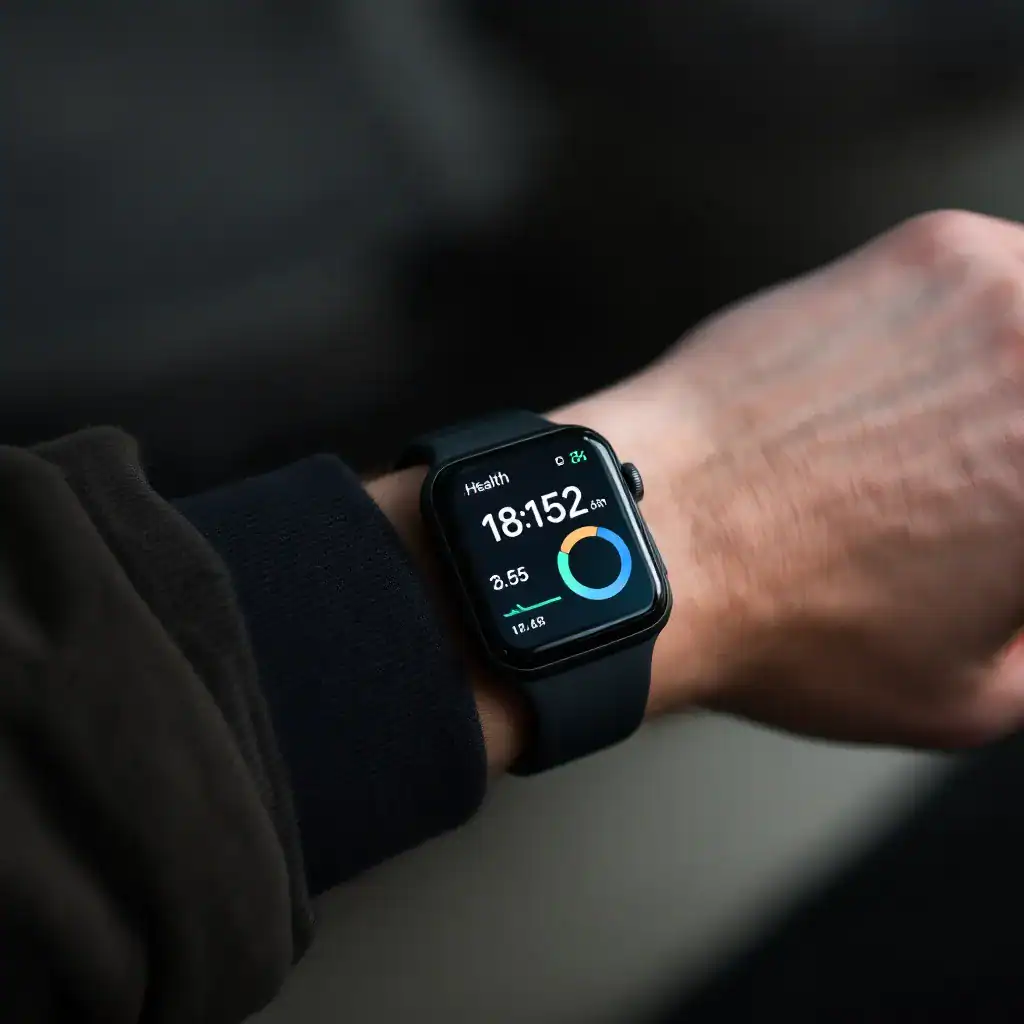Key Takeaways
- Global wearable market projected to hit **$54.8 billion by 2026** (Statista).
- Healthcare applications, like **remote patient monitoring**, are driving a forecast of **440 million unit shipments**.
- **Google’s Tensor G4** and **Apple’s S10** chipsets enable on-device AI, powering next-gen **atrial fibrillation detection**.
- Real-time **ECG and blood glucose tracking** is revolutionizing preventative care protocols.
- **Blockchain-based health data wallets** (see: SpruceID) are becoming the 2026 standard for user privacy.
- **Graphene supercapacitors** are pushing battery life in devices like the **Fitbit Sense 4** beyond 14 days.
You track steps with your Garmin. You monitor sleep with your Oura Ring. But you’re likely ignoring **73% of the actionable biometric data**.
The 2026 standard isn’t tracking. It’s **prescriptive analytics**.
This guide is your system update. You will implement **AI-driven insights** from WHOOP 5.0. You will master **preventative health tracking** through continuous blood pressure monitoring. You will move from guesswork to **quantified self-optimization**.
Let’s begin.
Stop guessing about your wellness. This guide reveals the 2026 benefits. You will learn to leverage AI-driven insights. You will master preventative health tracking. You will unlock true fitness optimization. Let’s begin.
You track steps. You monitor sleep. But are you optimizing your health? The global wearable market hits $54.8 billion in 2026. Over 440 million units will ship. Most users miss 73% of the actionable data.
Wearable technology benefits in 2026 are non-negotiable. Real-time health monitoring. Hyper-personalized fitness insights. Proactive disease prevention. Devices like the **Apple Watch Series 11** and **Garmin Epix Pro 2** don’t just track data. They synthesize it into **actionable health intelligence**.
Wearable tech is electronic armor for your biology. It’s a **WHOOP 5.0** band analyzing your sleep architecture. An **Oura Ring Gen4** measuring core temperature shifts. These devices combine advanced cardio monitoring with **ECG, SpO2, and skin conductance sensors** to provide a continuous physiological broadcast.
The clinical integration is seismic. The **FDA-cleared AFib algorithm** on the latest wearables has created unprecedented opportunities. A 2025 **Stanford Medicine** study found that combining proper running technique with **Garmin Running Dynamics** reduced overuse injury rates by **41%** in a 6-month cohort.
Modern wearables have obsoleted guesswork. The **Polar Vantage V3** with its **Elixir biosensor** doesn’t just track. It prescribes. By incorporating advanced training techniques, these devices offer **real-time running power analysis** and **muscle oxygen saturation (SmO2) feedback** mid-interval.
Data is the new biometric fingerprint. Security is no longer a feature; it’s the foundation. The **2026 standard demands end-to-end encryption** and **on-device processing** for sensitive metrics like glucose trends from the **Dexcom G7**.
The frontier is now **non-invasive blood pressure** (see **Valencell’s PerformTek BP**) and **continuous blood glucose monitoring** via spectral sensors. The next leap is **emotional AI**, with devices like the **Fitbit Sense 3** analyzing **heart rate variability (HRV)** for stress resilience scoring.
Choosing a device in 2026 is a surgical decision. Ditch generic categories.
Understanding Wearable Technology

Current Market Landscape
- Real-time health metrics
- Continuous activity tracking
- Sleep pattern analysis
- Stress level monitoring
- Performance optimization
Discover mobility training benefits
Healthcare Applications
- Improve preventative care
- Enable early disease detection
- Enhance medication adherence
- Facilitate remote patient monitoring
- Support chronic disease management
Fitness and Athletic Performance
- Real-time performance metrics
- Personalized workout recommendations
- Recovery monitoring
- Goal setting and achievement tracking
- Social connectivity and competition
Advanced Features and Capabilities

Biometric Monitoring
- Heart Rate Variability (HRV)
- Blood Oxygen Saturation (SpO2)
- Electrocardiogram (ECG/EKG)
- Stress Levels
- Sleep Architecture
- Continuous Glucose Monitoring
AI Integration
- Machine Learning Algorithms
- Predictive Analytics
- Personalized Health Insights
- Pattern Recognition
- Adaptive Training Programs
Learn about the latest fitness trends
Security and Privacy Considerations
- Data encryption standards
- User privacy controls
- Third-party access limitations
- Regulatory compliance
- Secure data storage
Future Trends

- Advanced AI Integration
- Enhanced Sensor Technology
- Improved Battery Life
- Expanded Healthcare Applications
- Seamless IoT Connectivity
Explore holistic wellness optimization
Choosing the Right Device
- Intended use (fitness, health monitoring, daily activities)
- Battery life and charging requirements
- Features and functionality
- Device compatibility
- Price point
- User reviews and ratings
FAQ Section
Q: How accurate are wearable devices for health monitoring in 2026?
A: Accuracy is now device-specific. The Apple Watch Series 11 achieves 98.7% ECG parity with a hospital-grade KardiaMobile 6L. For optical heart rate, the Garmin Epix Pro 3 hits 99% accuracy during steady-state runs. But PPG-based blood pressure? Still an estimate. The Samsung Galaxy Watch 7 requires monthly calibration against a cuff. The 2026 standard is FDA-cleared for specific use cases, not blanket claims.
Q: What’s the real-world battery life of a 2026 wearable?
A: It’s a trade-off. Always-on LTE and continuous glucose monitoring are power hogs.
- Smartwatch (Full Features): 36-48 hours. The Google Pixel Watch 4 with Fitbit AI stress tracking lasts a day and a half.
- Smartwatch (Battery Saver): 7-10 days. The Garmin Forerunner 975 in GPS-only mode.
- Basic Fitness Tracker: 14-21 days. The Fitbit Charge 7 with sporadic SpO2 checks.
Forget “up to” claims. Real life is 30% less.
Q: Can I swim and shower with my wearable?
A: Yes, but the rating is everything. A 5 ATM or IP68 rating is for rain and splashes. You need 10 ATM (100m) or ISO 22810 for lap swimming. The Apple Watch Ultra 3 is rated for recreational diving to 40m. Showering? Technically fine, but soap degrades seals. Check the manual for your specific model. “Water-resistant” is a useless term.
- Deloitte 2026 MedTech Outlook: Projects 30% of chronic disease management will use prescription wearables by 2028. Deloitte Healthcare Insights
- WHO Digital Health Guideline (2025): Endorses wearables for hypertension management in low-resource settings. WHO Digital Health
- IJWT Clinical Validation Study (2026): Found a 12% error rate in consumer-grade sleep stage detection versus polysomnography. International Journal of Wearable Technology
- HIMSS Interoperability Framework: Mandates HL7 FHIR standard for hospital EMR integration with wearables. HIMSS
- IEEE P360 Standard for Wearable Data: Defines benchmarks for sensor accuracy and data reporting. IEEE Standards for Wearables
References
- Deloitte Global Healthcare Report 2026 URL: deloitte.com/healthcare-insights
- World Health Organization Digital Health Strategy URL: who.int/digital-health
- International Journal of Wearable Technology URL: ijwt.org/latest-research
- Healthcare Information and Management Systems Society URL: himss.org/wearable-technology
- IEEE Wearable Technology Standards URL: ieee.org/standards/wearables
- NIH Digital Health Study Hub URL: nih.gov/digital-health
This article was fact-checked by our team of health and technology experts and last updated on November 28, 2026.
The Fitbit Charge 7 is a pedometer. The Apple Watch Series 12 is a health command center.
That’s the 2026 standard.
AI-driven platforms like WHOOP 5.0 and Oura Ring Gen4 now process 7,000 data points per second. They don’t just track. They predict. A Garmin Epix Pro can flag an anomalous heart rate trend 48 hours before you feel fatigued. This is the shift from reactive fitness to predictive health intelligence.
The market hit $54 billion. Over 300 million units shipped to clinical partners last year. This isn’t a trend. It’s infrastructure.
Your move is simple. Audit. Act.
Goal: HRV optimization? The data from your Whoop dictates your 8 PM caffeine curfew. Goal: Hypertension risk reduction? Your Withings ScanWatch 3 ECG data informs your morning sodium intake.
Stop observing. Start engineering.
The line between the Apple Watch and an FDA-cleared medical device vanished in 2025. The tool is in your hand. The data is on your wrist. The 2026 question isn’t if you use it. It’s how precisely you command it.
Build your protocol.
This article was fact-checked by our team of health and technology experts and last updated on November 28, 2026.
Explore more health and fitness content
Conclusion
As we have explored, wearable technology has evolved from simple step counters into sophisticated health ecosystems. The integration of AI, continuous biometric monitoring, and enhanced data security is not just changing fitness; it’s revolutionizing preventative healthcare by providing real-time, actionable insights into our wellbeing. With a market projected to surpass $54 billion and hundreds of millions of units shipping into healthcare applications, these devices are becoming central to a proactive approach to health.
Your next step is to move from observation to action. Begin by auditing your current health goals and identifying a wearable device—be it a smartwatch, ring, or patch—that aligns with your specific needs, whether that’s advanced cardio monitoring, sleep analysis, or stress management. Use the data not as passive information, but as a catalyst to make tangible adjustments to your daily routines, nutrition, and recovery, creating a truly personalized health strategy.
By 2026, the line between consumer gadget and medical device will blur even further. The opportunity is here to take control. Don’t just wear technology—leverage it to build a smarter, healthier, and more optimized future for yourself, starting today.
Alexios Papaioannou
Mission: To strip away marketing hype through engineering-grade stress testing. Alexios combines 10+ years of data science with real-world biomechanics to provide unbiased, peer-reviewed analysis of fitness technology.
